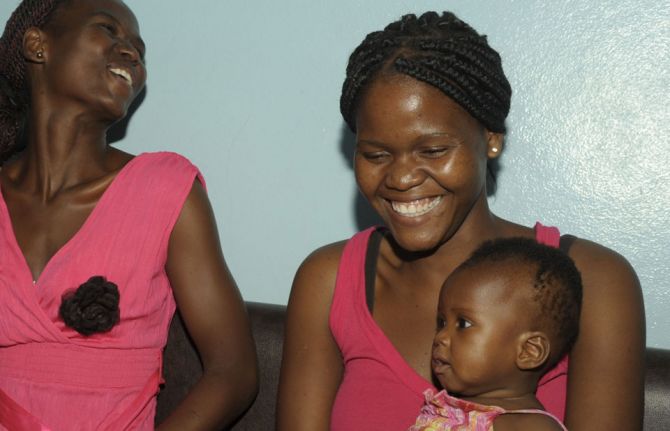

Press Statement
UNAIDS congratulates Kingdom of Swaziland on achieving over 73% viral load suppression among adults living with HIV and a major reduction in HIV incidence between 2011 and 2016
24 July 2017 24 July 2017New study shows results delivered thanks to focused efforts in collaboration with United States President’s Emergency Plan for AIDS Relief
MBABANE/GENEVA, 24 July 2017—UNAIDS congratulates the Kingdom of Swaziland on the findings of the Swaziland HIV Incidence Measurement Survey (SHIMS 2) announced by Prime Minister Barnabas Sibusiso Dlamini today in Mbabane, Swaziland that 73% of the adult population aged 15 years and older are virally suppressed—76% of adult women and 68% of adult men. The survey, part of the Population-based HIV Impact Assessments (PHIA), was conducted with funding from United States President’s Emergency Plan for AIDS Relief (PEPFAR).
“Swaziland has demonstrated to the world that shared responsibility and global solidarity produces results,” said UNAIDS Executive Director, Michel Sidibé. “Working together with PEPFAR and partners, Swaziland is saving lives and on track to control the epidemic.”
SHIMS 2 findings on, viral load suppression among adults of 15 years and older of 73% affirms UNAIDS estimates of 68% [54%–77%]. Compared to the 2011 SHIMS1 survey which had a similar design, the survey results suggest that the rate of new HIV infections among adults (ages 18-49 years) has decreased by half from 2.5% in 2011 to 1.4% in 2016 (2.0% for adult women and 0.9% for adult men). This is similar to the decline in incidence among adult ages 15-49 as published by UNAIDS: from 2.5% [2.3%–2.6%] in 2011 to 1.7% [1.4%–2.0%] in 2016.
In 2016, UNAIDS estimated that 220 000 [200 000—230 000] people were living with HIV in Swaziland, and that new HIV infections were reduced from 12 000 [12 000—13 000] in 2011 to 8800 [7300—11 000] in 2016. Prevention of mother to child coverage in Swaziland has been between 90 and 100% since 2011 and was estimated to be 95% [81%–>95%] in 2016. As a result fewer than 1000 children became infected with HIV in Swaziland in 2016.
“UNAIDS welcomes the Swaziland PHIA results as further affirmation of the validity and accuracy of our modelling estimates.” said Mr Sidibé.
The data from the SHIMS2 are part of the PHIA, funded by PEPFAR and conducted by the U.S. Centers for Disease Control and Prevention (CDC) and ICAP at Columbia University’s Mailman School of Public Health. In addition to the Swaziland survey, similar data from Malawi, Zambia and Zimbabwe were gathered through critical household surveys, in collaboration with local governmental and non-governmental partners in 2016.
UNAIDS congratulates PEPFAR for their unwavering commitment to the global AIDS response. PEPFAR works with more than 50 countries, to maintain access to life-saving treatment, provide services for orphans and vulnerable children, ensure that the most vulnerable and key populations have access to services to prevent and treat HIV and accelerate progress toward the end of the AIDS epidemic.
UNAIDS
The Joint United Nations Programme on HIV/AIDS (UNAIDS) leads and inspires the world to achieve its shared vision of zero new HIV infections, zero discrimination and zero AIDS-related deaths. UNAIDS unites the efforts of 11 UN organizations—UNHCR, UNICEF, WFP, UNDP, UNFPA, UNODC, UN Women, ILO, UNESCO, WHO and the World Bank—and works closely with global and national partners towards ending the AIDS epidemic by 2030 as part of the Sustainable Development Goals. Learn more at unaids.org and connect with us on Facebook, Twitter, Instagram and YouTube.
